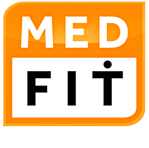Fitness Futures: Retail Locations for High-risk Population Management
Written on April 14, 2014 at 2:09 pm, by John P. Greene
Walgreens, Blue Cross Blue Shield of Kansas City and other major insurers such as WellPoint, Humana and United Healthcare have something in common that should pique the interest of the health and fitness industry. These companies have launched new retail locations to provide and sell products and services to attract more wellness consumers. Specifically, their goals are to capture more of the $5 billion market for primary care services.
For some insurers new retail locations in neighborhoods are offering urgent care, occupational medicine, physical therapy and other similar services. For others, new store formats to sell insurance products including fitness and wellness classes.
Walgreens, which operates more than 6,000 stores and 700 medical clinics, is extending its pharmacy and medical personnel into the growing field of high-risk population management. For LiveBlue of Kansas City Blue Cross, two new locations are selling insurance in a more consumer-friendly environment that uses the carrot of providing yoga classes and healthy living seminars. With different service and retail models, these businesses can provide new accessible locations for managing the most costly high-risk patients.
Other national retail clinics have jumped on this bandwagon by linking with major health systems to provide care to patients. Both the Henry Ford Health System and the Cleveland Clinic have relationships with CVS Pharmacy in-store clinics for basic primary care services. What if other national retailers decided to tap into this market as well?
Whole Foods would be a logical candidate, along with other big box retailers (Walmart) looking to repurpose space and attract traffic. How could these new retail medical locations expand and deliver fitness, nutrition and weight-management services as extensions of their brands? How might it impact the fitness industry?
I believe the fundamentals include:
1. Dedicated, visible space-An esthetic environment distinct from the dominant retail theme is a necessity. The space needs to include a multi-purpose classroom with resilient flooring, personal instruction area, meeting room and smaller spaces for counseling and testing with an exercise physiologist as the lead.
2. Exercise Software-Software and apps currently provide appraisals and exercise biometrics (e.g., mapmyfitness.com) for healthclubs and individuals. However, a system needs to be developed for graded exercise programs based upon an individual’s health history of chronic conditions, medications and capability. These guided exercise and nutrition programs will need to be linked to the Electronic Health Record (EHR) providing consistency in managing diet and exercise for the care clinic provider. Exercise is Medicine through the American College of Sports Medicine is working on a Prescription and Referral Tool for healthcare professionals to link to the EHR. Given HIPAA requirements, it’s not clear how qualified fitness professionals would utilize the tool this stage.
3. Rewards-Money talks. Customer loyalty programs tied to individual compliance with established health and exercise goals could go a long way to stimulate and maintain compliance among low-interest participants.
4. Relationships with ACOs-I believe that an ACO will be the treasurer for paying out a portion of their bundled payments for vendors providing prevention and wellness services. These fees would likely be based on a formula involving capitated rates, frequency of use data and patient compliance factors. For retailers, payments may be a new source of income.
5. Strategic Site Selection-With so much commercial real estate, medical retail needs to follow the systematic approach used by other retail brands. This approach consists of knowing the target demographics and location criteria of higher volume comparables. For example, MedFit has developed a site selection model for urgent care clinics with more than 20 site-specific variables to forecast expected patient volumes.
The expansion of prevention and wellness with national retailers would augment the efforts of traditional fitness providers, i.e., commercial clubs, YMCAs, public recreation and medical fitness centers, capturing the enormous market of non-healthclub users. For these consumers, this expanded universe of locations would increase access. Combined with the correct mix of frequent communication, the numbers of Americans that could regularly receive sound exercise and nutrition guidance would push the national fitness club participation rate above the current national average of 20 percent, accomplishing a critical goal of the Affordable Care Act.
Category: Health & Fitness ~ Population Management ~ Retail Health
Tags: clinically based programs ~ healthcare referrals ~ Healthclubs ~ population management ~ retail health
Fine tune your fitness programs for ACO networks
Written on March 3, 2014 at 1:56 pm, by Robin Schuette
The first quarter of 2014 is nearly over (and hopefully that is true of our winter!), so it’s a great time to assess if your strategies are on track to make your fitness or wellness business better this year. Fine-tuning your programs and communications tactics can better position your club as a part of the new healthcare delivery model. Although it is unclear how physicians and hospitals receiving bundled payments may pay for prevention and wellness services, it is clear that they will need to focus more attention on an individual’s complete health. Let’s start with who is actually in your club and how you can leverage these relationships strategically.
1. Connectors, Mavens and Salesmen
Malcolm Gladwell shares case studies on “How Little Things Can Make a Big Difference†in his 2000 book, The Tipping Point. We assigned this book to a group of fitness center managers, and asked them to formulate their own tipping points related to primary goals for their center’s business.
We especially wanted to increase awareness of chronic disease issues in the community, as we had purchased a series of ACSM exercise protocols that we believed create a key competitive advantage. But first we needed the team’s help in identifying connectors, mavens and salesmen among the membership to help spread our message–to create our own tipping point. Having your staff formulate a plan to identify such customers for key message delivery is an effective group exercise that can energize your current plan or be part of your planning process next year.
Our primary goal was to identify the Mavens, whom Gladwell describes as the “information specialists, or people we rely upon to connect us with new information.†These prime referrers want to solve other people’s problems. While probably not motivated by actual referral rewards, this group still needs nurturing. Our goal was to identify this type from members who had responded to a Loyalty Survey or who had been recognized in Leader Circle groups (based on weekly attendance). Ultimately, we wanted to discover and promote their personal improvement stories, and to develop talking points and incentives to spur them on to more referrals.
The other key groups in the Tipping Point concept are connectors and salesmen. Connectors typically make introductions in social circles because they have so many contacts in their network. Perhaps this valuable group is already active on your Facebook page. As you already know, salespeople are persuasive and charismatic, and you have them on staff.
You need all three groups working in concert to position your club for health care. But you also need “the stickiness factor,†as coined by Gladwell. That factor is the message. We’ll describe more on key consumer segments and specific messages in a later article.
2. Strategic Visioning
Change is rapidly occurring in the $2.7 trillion health care industry–especially in delivery. How will you be part of that change? When did you last take time to dream about your business, to dream with your key managers? Ask your core team members to explore their high point in working for your club, a time when they were operating at peak performance. Have them tell the story and describe the most important and helpful factors in the organization and the results. What can you learn from each other’s experience in how change occurs? Capture these details as you prepare for other changes that will be occurring in our industry. Start by asking what was it about the organization or team members that made a positive experience possible? What were the best qualities, skills or values that made it a high point? Write them down.
3. Asking Better Questions
Are you asking the right questions of your employees, your customers and yourself? The answers we get are often determined by the questions we ask. If we ask irrelevant questions, we get irrelevant answers. If we ask better questions—empowering questions—we get empowering answers. Marilee Adams, an executive coach, has developed a system of tools called Question Thinking that she outlines in her book Change Your Questions, Change Your Life. In a future article we will use these tools to dive into new member orientations and health and fitness assessments. Get started with your team with these questions: What could or should our competitive strategic advantage be? What do we have the ability to create right now? In mid-term? In the long-term?
4. Living the Vision
How has your business vision changed? In an annual all-staff meeting years ago, we used the FISH! Philosophy video, which describes how Pike’s Place Fish Market in Seattle became world-famous. I still relate to its simple idea of coming together as a team to live the vision. Successful teams are guided by three principles:
Be it: make the vision part of everything you do
Commit: make a commitment to bringing the vision into your place of work
Coach it: teach others about the importance of the vision, and have fun in doing it
Are you modeling a culture of wellness and fitness among your employees? If not, how do they feel about delivering health and wellness to your customers, other clients and possibly mavens in your community? An upcoming article will explore corporate wellness programs and their role in the new healthcare landscape.
5. Leaders Lead
Leaders focus on people and ask what and why. They develop and innovate. Are you ready to lead this next innovation? It’s going to require a longer-term perspective and resources to create change in your club and its position within the community. We’ll give you tips on how to get there.
Watch for our series for the Club Insider and excerpted here, Fitness Futures and Healthcare Delivery. We’ll cover:
Developing Healthcare Referrals: Sedentary, deconditioned and overweight. You can reach this market more effectively with lifestyle programs that can expand your ancillary revenues. But first you need to use the right message to get referrals from healthcare professionals in your market.
Your Club, Your Community: The healthcare environment is changing, and your role as a top fitness provider is a community asset. Have you identified community initiatives that can help you showcase your facility to residents and the health care community?
Going Corporate: Are you modeling a culture of wellness among your own employees? One of the best ways to develop a corporate wellness program is to practice what you preach.
Sticky Messages for Segments: Understanding who your customers are is one of the ways you’ve been successful in your business. Do you know what other customers you can reach in your market area? We do. With our Prizm analysis model for medical fitness center consumers, we’ve identified 10 top segments you can reach with lifestyle programs and targeted communications.
Measure and Evaluate. Assessing your programs is yet another way to communicate your results to your customers and potential customers. Plus, it makes smart business sense for those healthcare constituents you want to entice.
Use these ideas to start brainstorming on changes occurring in our industry. We welcome your thoughts and feedback. Sign up on our web site to get a list of analytical questions to help maximize your strategic competitive advantage.
Category: Consulting ~ Fitness Operations ~ Health & Fitness ~ Management ~ Marketing
Tags: clinically based programs ~ fitness programs ~ healthcare referrals ~ mavens ~ strategic visioning ~ tipping point

